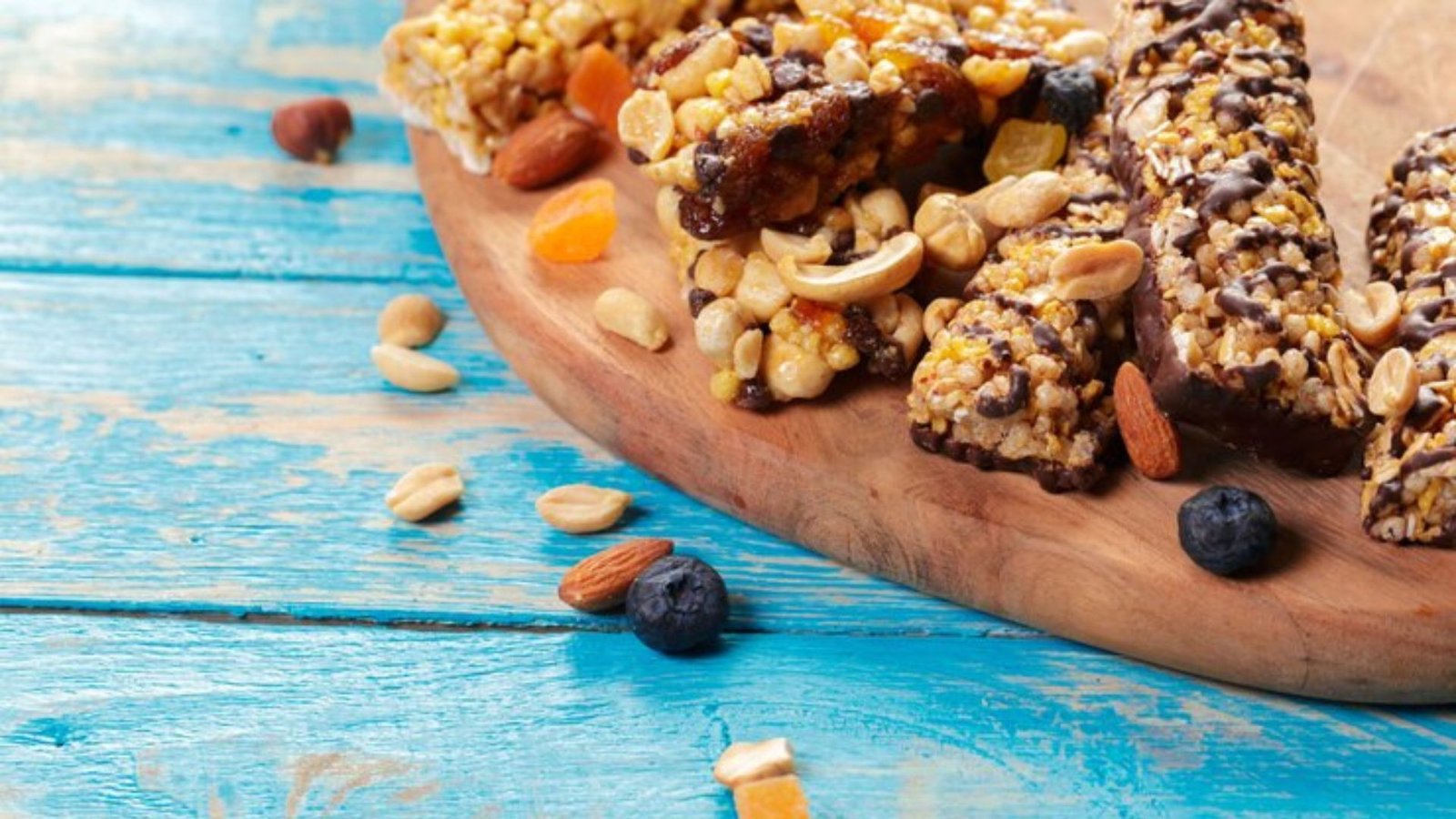Protein bars are a great snack option for anyone who’s always on the go, looking for a quick source of energy, or aiming to boost their protein intake. Store-bought protein bars can be expensive and filled with unnecessary preservatives and artificial ingredients. The good news is you can make your own protein bars at home with simple, nutritious ingredients. Whether you’re trying to build muscle, curb your sweet tooth, or simply need a filling snack, these homemade protein bars are the answer.
In this article, we’ll guide you through an easy homemade protein bars recipe that’s not only delicious but also packed with the right amount of protein and healthy ingredients. Let’s dive in and explore how to make these perfect, homemade protein bars.
Why Choose Homemade Protein Bars?
Making protein bars at home offers several advantages over buying pre-made ones. Here are some reasons why homemade protein bars should be your go-to snack:
Control Over Ingredients
One of the biggest benefits is the control you have over the ingredients. You can avoid artificial sweeteners, preservatives, or any unwanted additives commonly found in store-bought protein bars. By making them yourself, you ensure that your protein bars are made with wholesome, real food ingredients.
Customizable Flavors
Another benefit is the ability to experiment with flavors. You can add your favorite nuts, seeds, dried fruits, or even spices like cinnamon and vanilla. The flexibility to customize makes homemade protein bars a fun and rewarding project.
Cost-Effective
Making your protein bars is a budget-friendly alternative. Buying protein bars regularly can get expensive, but making them in bulk can save you a significant amount of money.
Better for Your Health
Homemade protein bars often contain healthier ingredients compared to commercial ones, such as natural sweeteners, whole grains, and clean protein sources. This helps you stick to a healthy lifestyle without compromising on taste or nutrition.
Homemade Protein Bars Recipe: The Basics
Making protein bars from scratch doesn’t require a lot of time or complicated steps. Here’s a simple homemade protein bars recipe that you can prepare in just a few minutes.
Ingredients:
2 cups rolled oats – These provide the base for your bars and are a great source of fiber and complex carbohydrates.
1/2 cup protein powder – Choose a protein powder that suits your dietary preferences (whey, plant-based, etc.).
1/4 cup nut butter (almond, peanut, or cashew) – Nut butter adds a creamy texture and healthy fats.
1/4 cup honey or maple syrup – For natural sweetness and to help bind the ingredients together.
1/4 cup milk (dairy or plant-based) – Adds moisture and makes the mixture easier to combine.
1/4 cup dark chocolate chips or dried fruits (optional) – For extra flavor and texture.
1 tsp vanilla extract – Enhances the overall flavor.
Pinch of salt – Balances out the sweetness and enhances other flavors.
Instructions:
Prepare Your Mixing Bowl
Start by grabbing a large mixing bowl. Combine the rolled oats and protein powder in the bowl. Stir the dry ingredients together so they’re evenly distributed.
Add the Wet Ingredients
In a separate smaller bowl, mix the nut butter, honey (or maple syrup), milk, and vanilla extract. Stir them well to form a smooth mixture.
Combine the Wet and Dry Ingredients
Slowly pour the wet ingredients into the dry ingredients and mix thoroughly. You may need to use your hands to fully combine the mixture. If the dough feels too dry, add a little more milk, one tablespoon at a time.
Add Optional Add-ins
If you’re using chocolate chips, dried fruits, or any other optional ingredients, now is the time to mix them in. Be sure to distribute them evenly throughout the batter.
Shape the Protein Bars
Line an 8×8-inch baking dish with parchment paper or lightly grease it. Press the mixture firmly into the dish to create an even layer. You can use a spatula or the back of a spoon to smooth it out.
Chill and Set
Place the baking dish in the refrigerator for at least 2 hours or until the bars are firm. This helps the protein bars set and makes them easier to cut.
Slice and Store
Once the protein bars have firmed up, cut them into squares or rectangles. Store the bars in an airtight container in the fridge for up to a week, or freeze them for longer storage.
Variations to Try
Once you’ve mastered the basic recipe, you can start experimenting with different ingredients and flavors. Here are a few ideas for creating your perfect protein bar:
Chocolate Peanut Butter Protein Bars
Add cocoa powder and extra peanut butter for a chocolate-peanut butter flavor that will satisfy your cravings.
Tropical Protein Bars
Use dried coconut, pineapple, and mango for a tropical twist. You can also add a dash of lime juice for extra zing.
Berry Protein Bars
Mix in freeze-dried berries like strawberries, blueberries, or raspberries for a fruity, antioxidant-packed snack.
Cinnamon Roll Protein Bars
Add cinnamon, nutmeg, and a bit of brown sugar to mimic the flavors of a cinnamon roll. You could even drizzle a little icing on top.
Health Benefits of Homemade Protein Bars
When you make protein bars at home, you ensure they’re packed with nutritious ingredients. Let’s take a look at some of the key health benefits:
Rich in Protein
Protein is essential for muscle repair, growth, and overall health. Homemade protein bars provide a healthy dose of protein, helping you meet your daily needs, especially if you’re working out or looking to increase your protein intake.
High in Fiber
The oats and other whole grains in these bars are rich in fiber, which helps promote digestion, regulate blood sugar levels, and keep you feeling full longer.
Packed with Healthy Fats
Nut butter adds healthy fats that are important for maintaining brain function, hormone production, and overall heart health.
Natural Sweeteners
Honey or maple syrup are natural sweeteners that provide a cleaner source of sugar compared to refined sugars found in many store-bought protein bars.
Tips for the Best Homemade Protein Bars
To make sure your homemade protein bars turn out perfectly every time, keep these tips in mind:
Use a High-Quality Protein Powder
The quality of your protein powder can make a big difference in the taste and texture of your bars. Choose a protein powder that you enjoy the flavor of and that matches your dietary preferences.
Don’t Overmix
When combining the wet and dry ingredients, mix just until everything is incorporated. Overmixing can lead to dense and tough bars.
Experiment with Flavors
Don’t be afraid to try different flavor combinations. Spice it up with ingredients like cinnamon, ginger, or even matcha powder for a unique twist.
Adjust Consistency
If the mixture is too dry, add a little more liquid (milk or water). If it’s too wet, add extra oats or protein powder until it reaches the desired consistency.
Conclusion
Homemade protein bars are an excellent, customizable, and healthy snack that you can easily prepare at home. With just a few simple ingredients, you can create a protein-packed snack that will keep you energized throughout the day. Whether you’re fueling up after a workout or looking for a quick on-the-go snack, these homemade protein bars are perfect for a nutritious boost. They’re easy to make, cost-effective, and can be tailored to suit your personal taste preferences.
ALSO READ:Fresh Fruit Desserts Ideas: A Sweet & Healthy Delight
FAQs
How long do homemade protein bars last?
Homemade protein bars can be stored in an airtight container in the fridge for up to one week. You can also freeze them for up to three months.
Can I use a different sweetener besides honey?
Yes! You can use maple syrup, agave nectar, or any other liquid sweetener of your choice. Just make sure the consistency is still thick enough to hold the bars together.
Can I use plant-based protein powder?
Absolutely! Plant-based protein powders, such as pea or brown rice protein, work great in this recipe. Just make sure to choose a flavor that complements the other ingredients.
Can I add more protein to the bars?
Yes, you can increase the protein content by adding more protein powder or including other protein-rich ingredients like hemp seeds, chia seeds, or Greek yogurt.
Are these bars suitable for people with dietary restrictions?
These bars can be customized to suit various dietary needs. You can make them gluten-free by using gluten-free oats, and they can easily be made dairy-free and vegan by choosing the appropriate plant-based ingredients.











